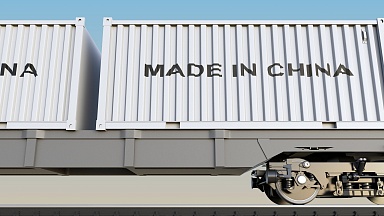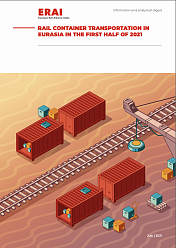The Federal Council announced these decisions on 13 November, after it adopted the relocation report 2019. This report comes out every two years to evaluate the status of the modal shift policy and analyse expected results. Although the 2019 report shows that the existing measures are effective, it also revealed that the targeted reduction to 650,000 truck journeys per year were not accomplished. The Federal Council therefore proposed a package of measures to further strengthen the modal shift.
Subsidies until 2026
The extension of the subsidy scheme is an important part of the package. The Federal Council has requested the Parliament to extend the payment framework up till 2026. In the period 2024-2026, an additional 90 million francs (82.2 million euros) will be made available to compensate unaccompanied combined transport operators.
Although the Swiss rail freight market has been preparing for the loss of subsidies, various parties expressed their concern that it would harm the market. According to Hupac, the largest intermodal operator on the market, only half of today’s operating subsidies, around 110 million francs (0.88 million Euros) for the entire transalpine combined transport, could be compensated by 2024.
Lower track access charges
The lowering of track access charges has been on the agenda for a little longer, but has now also been confirmed in the package of measures. This was done via an amendment to the Network Access Ordinance adopted by the Federal Council.
Starting from 1 January 2021, the charges for using the Swiss railway network will be decreased by around 90 million francs (82.2 million euros) every year. In addition, a special discount is to be introduced for long freight trains, since long trains can make better use of the infrastructure’s capacity. The Swiss charges are currently relatively low compared to other EU countries. However, Germany and the Netherlands have also planned similar measures, increasing the pressure on Switzerland to remain competitive in its railway pricing.
Other measures
Other measures included in the package are an adjustment in the classification of distance-related heavy goods vehicle charges (HGVC). Lorries of emission classes EURO IV and V should no longer fall into a more favorable category. This should encourage a shift of heavy-good vehicles to rail.
Since 2001, lorries on all Swiss roads pay distance-, weight- and emissions-related charges. Two thirds of the revenues are allocated to the Rail Infrastructure Fund (RIF). Without the latest adjustment, the weighted average would fall from 293 francs (2018) to 275 francs in 2024, the Swiss Federal Office of Transport explains.
A fourth measure is the intensifying of heavy traffic inspections, among other things by realising the heavy goods traffic control center Gotthard south in Giornico. Also this measure is aimed at encouraging the shift of HVG’s to the railways.
Volumes
The Swiss modal shift policy provides that the number of journeys by domestic and foreign lorries and semi-trailers through the Swiss Alps must be lowered from what was 1.4 million in 2000 to 650,000 per year. In the years 2017 and 2018, 954.000 and 941.000 transalpine journeys of HVG’s were counted respectively. Hence, the target was not achieved.
Positively, the number of journeys by HVG’s over Swiss roads decreased by 3.5 per cent in the period 2016-2018. Compared to the reference year 2000, the decrease is even 33 per cent, meaning that a third of these vehicles were taken off the road since the start of the modal shift policy.
On the other hand, the numbers are not positive for rail freight transport. Rail freight transport through the Alps witnessed a drop of 2.6 per cent in the period 2016-2018. At the end of 2018. the share of rail in transalpine freight traffic was at 70.5 per cent, 0.5 percentage points lower than in 2016, the 2019 report reads.
Railway link through the Alps
The rail freight volumes should be lifted significantly with the opening of the Ceneri Base Tunnel is 2020. The New Railway link through the Alps (NEAT), a passage of tunnels and railroad, is then completely operational. The entire north-south axis is then also accessible for 4-metre height trains, which should have its effect in 2021.
Although the NEAT was a core element to support the shift to rail by reducing production costs and increasing capacity, this alone will not be enough to achieve the modal shift ambitions, the rail freight market has repeatedly said. This has now been recognised by the Swiss government. The package of measures, in combination with the NEAT should lead to more satisfactory results.




